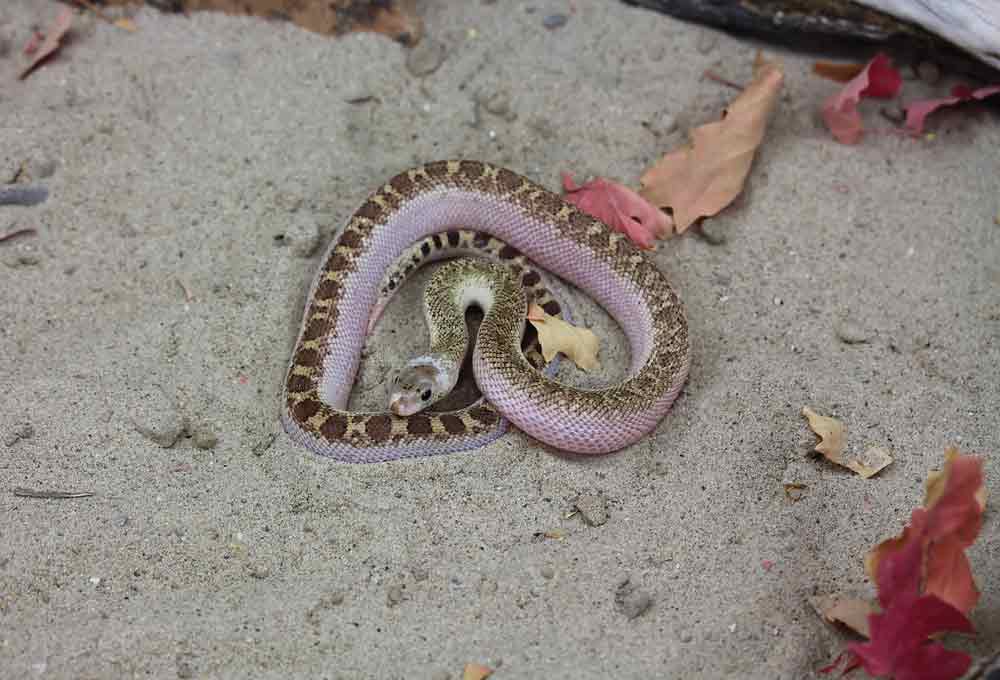From their ease of care, to unmatched visual beauty, bull snakes are gratifying species to keep, beyond measure.
When it comes to top-shelf choices of the most rewarding and easy-to-keep species of snakes to possess in captivity, bull snakes stand out among the champions of Colubrids with exceptional reasons detailed in all aspects. From their ease of care, to unmatched visual beauty, this species is gratifying beyond measure.
Natural History
Bull snakes (Pituophis catenifer sayi) are inhabitants of the central region of North America, being found as far north as Canada, as far south as the northeastern tip of Mexico past the Texas border, in addition to as far west as Montana, and as far east as Indiana. The differences of visual characteristics of color and pattern among different locations exemplifies the beauty of variability within this species. The nautral habitat of these snakes include desert, woods, plains, prairies and mountain ranges. Bull snakes are primarily diurnal, being active in daytime, and during warmer summer months, they become nocturnal, searching for food during the night hours.
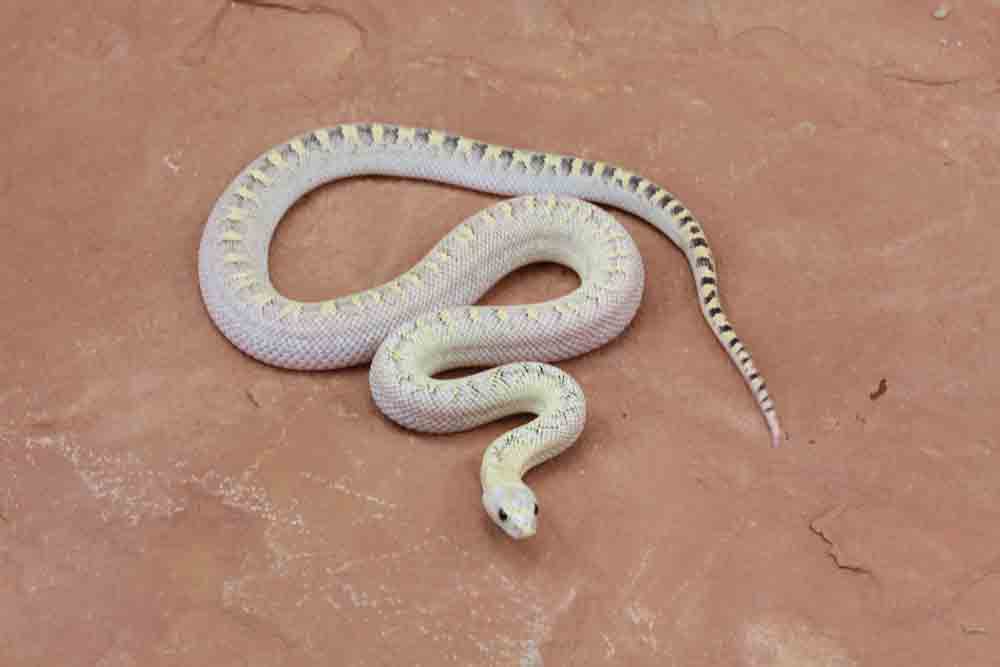
Yellow whitesided.
Physical Description/Disposition
Bull snakes come in a vast array of colors. Ground color can be yellow, tan, straw, and red/orange with blotches being brown/chestnut brown outlined in black, or blotches being pure black. In hypomelanistic specimens, blotches can vary from light-silvery black to raspberry/maroon/orange blotches. Bull snake patterns and colorations are very complex, as one could discover new visual formations they didn’t see before, and this factor plays out in nature regarding camouflage.
Bullsnake Eats Golf Balls, Gets Stuck In Chicken Coop
Bull snakes are very heavy-bodied snakes with an average length of 4- to 7- feet. Individuals in my experience, have an average length of 5-6 feet. Although extremely long specimens have been found, in the 8- to 9- foot range, those examples are not as common, nor the norm. Interestingly, bull snakes are not sexually dimorphic when it comes to size with males/females being the same length. Their large/wide heads, along with their wide Rostral scale, is superiorly used for digging/burrowing.
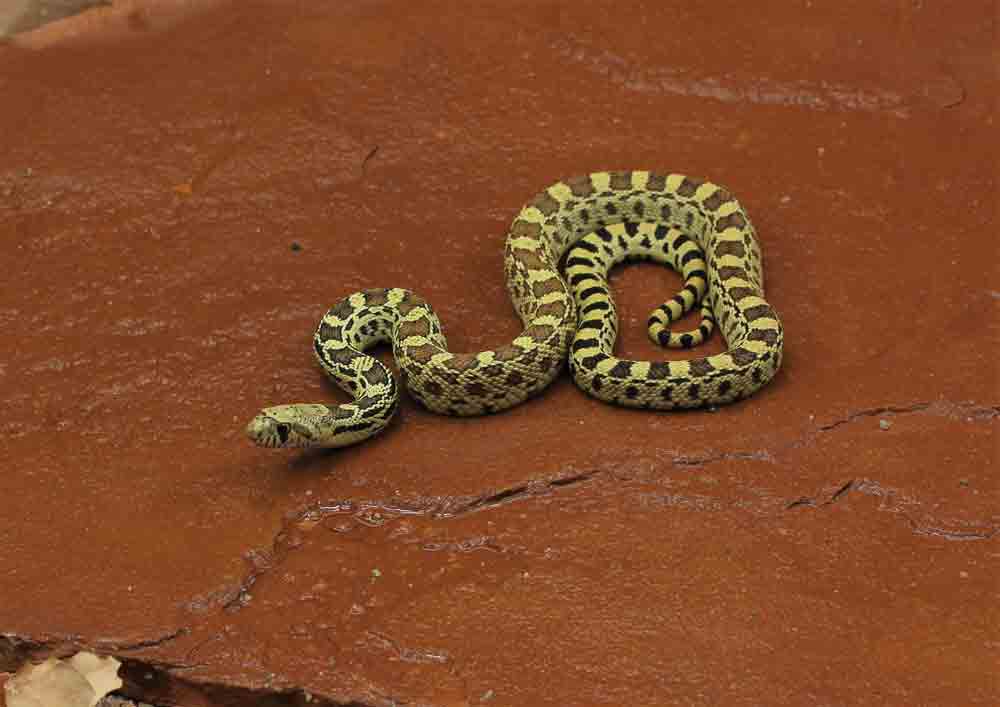
Yellow bull snake
When bull snakes hiss, the air in the trachea, being forced through the epiglottis, produces a hissing/distorted grunting sound, very similar to an actual bull itself. The hiss volume is extremely notable, and is part of their defense in the wild against predators. Because of this display, bull snakes are mistaken for rattlesnakes by those not knowledgeable of this species. In captivity, some specimens may exhibit these behaviors as well, with my experience noting that most simply grow out of this behavior. Regarding handling in captivity, especially with babies who display this behavior, the key point with calming them down is to focus on being direct, yet firm, in gently picking them up and making them feel well supported by your hands and arms. Once they are “broken” from this defense posture, they will then often go into “flee-mode,” in which you then firmly, yet gently, handle them like any other snake. In addition, if an adult/baby strikes at you, most of the time, their strike is an abrupt “bump“ of their snout, so to say, disguised as an actual bite, appropriately being termed a “bluff-strike.”
Bullsnake Enclosures
Bulls can be kept in a wide array of cage types. Some keepers enjoy keeping bulls in enclosures with naturalistic displays, using dirt/sand as substrate, along with rock/branch cage additions, as they do enjoy climbing. A 4’ x 2’x 2’ enclosure is an ideal size for an adult bull snake. This size will provide plenty of opportunity to create a naturalistic display.
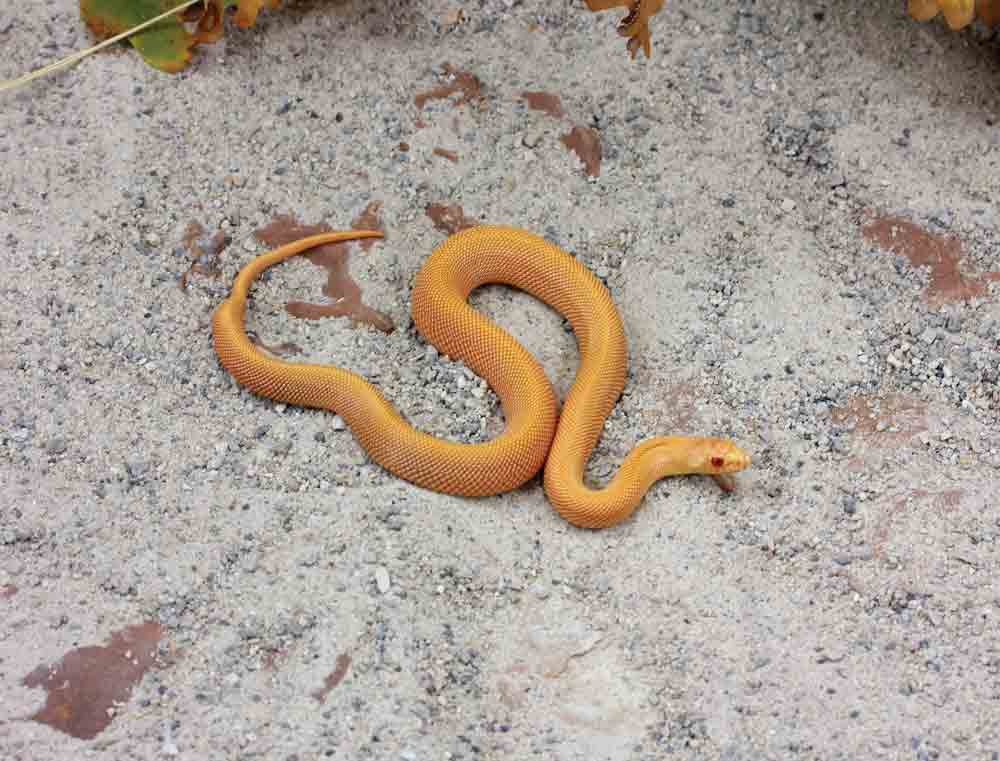
Albino patternless bull snake
Others keep their bull snakes in large plastic sweater/blanket boxes that can be bought at various stores. Substrates with this way of keeping include shredded aspen. Aspen bedding is what I prefer as it is cheap, comes in big packages, and bulls like to burrow in it. In addition, spot cleaning is easy using aspen. Although many keepers have success with pine shavings, it has been known to produce a bleach-like chemical when pushed into water bowls, and mixed with the water. Cedar is not recommended due to having oils that are harmful to snakes.
For baby bulls, plastic shoe boxes are fantastic and then as the snake grows, the size of the enclosure is increased. Adult bulls, being active as they are, thrive in the largest possible enclosure. I personally use Animal Plastics CB70 plastic tubs with racks for many of my adult bulls and for my biggest specimens, I do have bigger plastic tubs for them. Hide boxes are vital to their security and health and many items can be used, such as hides sold from reptile suppliers/pet stores, to then producing your own at home. Creative hides can range from using various boxes such as cereal/food/cardboard boxes, to plastic containers of all kinds, to even PVC plumbing pipe sections. Fresh water must be available at all times using water bowls with a heavy base. Additional cage decorations can be added such as moisture boxes with damp moss in environments that have a drier climate, to decorative plastic branches.
Temperatures, Lighting and Heating
Bulls prefer cooler temperatures than what some may keep North American colubrids, such as kingsnakes, milksnakes, and corn snakes. As a keeper, my bulls enjoy a range from 74 to 82 degrees Fahrenheit (23.3 to 27.8 degrees Celsius), with 78 degrees Fahrenheit (25.6 degrees Celsius) being most favorable, making them extremely handleable and calm, which makes them such a pleasure to hold. Temperatures of 82 (27.8) on up results in grumpy/uncomfortable bulls, hissing and becoming intolerant to handling, in addition to possible regurgitation.
It is strongly thought that in the past, bulls were kept much warmer than needed, thus bringing forth the reputation that all bulls were hissy/flighty, and untamable. As years went by, it was determined that bullsnakes simply did better with cooler temperatures. Maintaining temperatures include utilizing heat tape for thermoregulation in their rack systems, or using only ambient temperatures most of the year, which is what I prefer. I use heat tape for my breeding adults only in the spring, while they are developing eggs. While bulls do not need specific lighting/UV lighting, they may benefit, as long as temperatures do not get too high.
Feeding
Bull snakes enjoy a wide array of food options. In the wild, they primarily feast on various mammals such as rodents, rabbits, squirrels, chipmunks, in addition to small birds and bird eggs, etc. They are completely opportunistic so they also employ instances to eat roadkill, and whatever they can overpower, all by constriction.
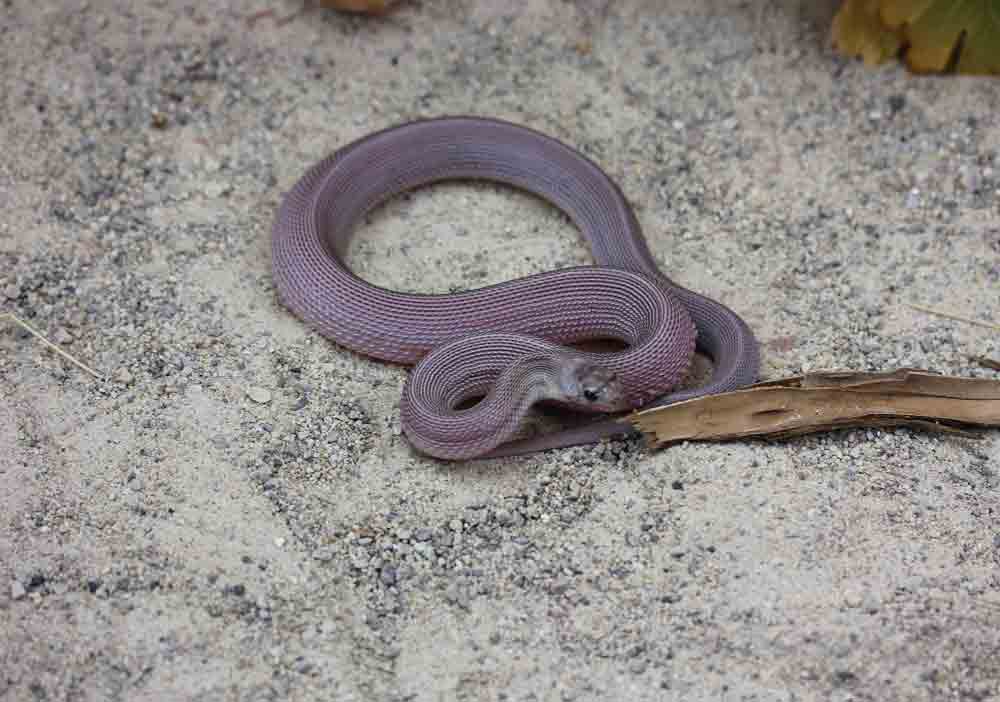
Axanthic patternless bull snake
For example, one particularly interesting instance when an acquaintance found an extremely large Texas bullsnake, which was more than 9 feet in length, the animal regurgitated a baby armadillo after capture.
In captivity, it is common to feed mice/rats/chicks from various frozen rodent suppliers. The size of the food should be 1.5 times as big as the largest part of their body, at the very most. While many keepers feed with different frequencies and amounts, I personally feed one item once a week, or multiples if I have smaller food items, from babies to small-young adults. My biggest adults get fed every 7-10 days. The key point to focus on is proper weight and to avoid obesity. In my experience, bullsnakes can average at least 15 to 20 years of age with proper care and diet.
Handling/Temperament
Despite their past reputation of being difficult to handle, Bull snakes, with their high intelligence, awareness, and mental adaptation of their environment around them, are extremely docile regarding handling. With myself and many other keepers, regarding captive specimens, most bulls fare exceptionally well with handling, due to their larger size, calmness, docile nature, and sweet disposition.
While many baby bulls can be hissy, many, if not most, outgrow that behavior. All of these factors result in them being amazing pets to hold and observe.
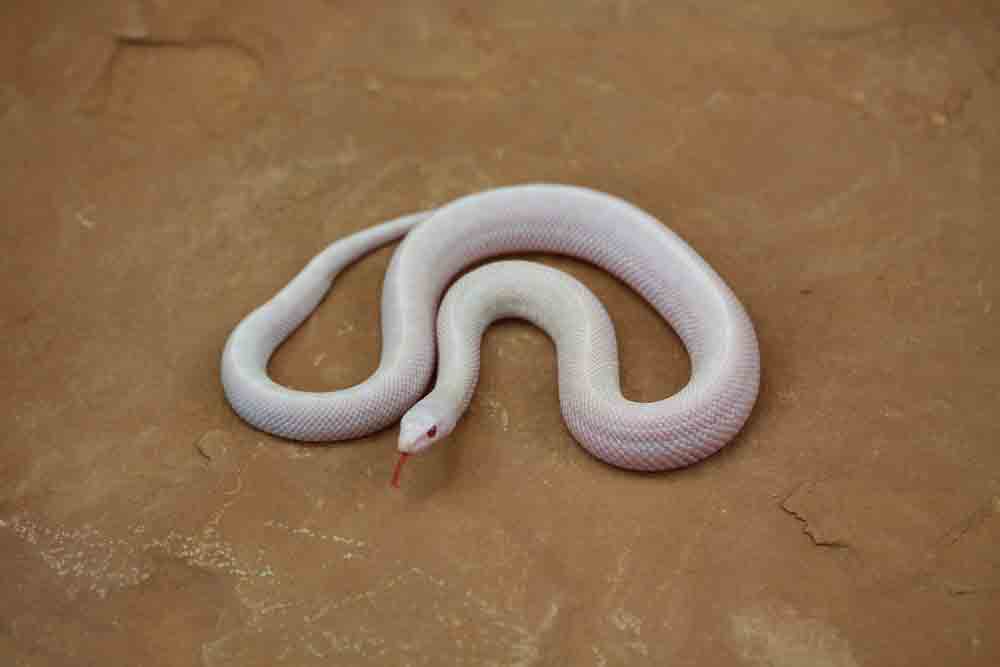
Blizzard color morph
Unlike kingsnakes and milksnakes, captive bull snakes regularly do not musk when picked up for handling, nor do they randomly bite. While some may be initially flighty when first picked up, most calm down quickly. Wild specimens can be more defensive, at first, but many, if not most, calm down, in my experience, as well.
Breeding Bulls in Captivity
Bull snakes, in my opinion, should be at least 3 to 4 years old, AND averaging 4 to 7 feet, when it comes to being ready to breed. Some Northern Range bulls tend to be smaller, such as Montana specimens, while many, if not, most other localities, are larger. I personally prefer females to be at least 5 feet, if not 6 feet long for many reasons. For one, bull snake eggs are much larger eggs compared to most other Colubrids, and the egg amount can be large, in which the female bull needs to be as large and mature as possible. In addition, double-clutching is not suitable, nor in the best interest of the female, as laying these exceptionally large eggs is extremely taxing on them.
Preparing bulls for brumation is quite simple. Properly fed bulls should have their feedings stopped two to three weeks before brumation, allowing their digestive systems to be cleared of all food. Temperatures are gradually lowered to my preferences of 50 to 60 degrees Fahrenheit (10 to 15.6 degrees Celsius), even allowing colder temperatures below 50 to take place, in short increments. I give them access to water at all times available during brumation, along with a completely dark room. The brumation length of time that I prefer is three to four months. In my opinion, brumation is critical for breeding success. For the males, it helps with sperm production, while for the females, it helps with ovulation and breeding cycles.
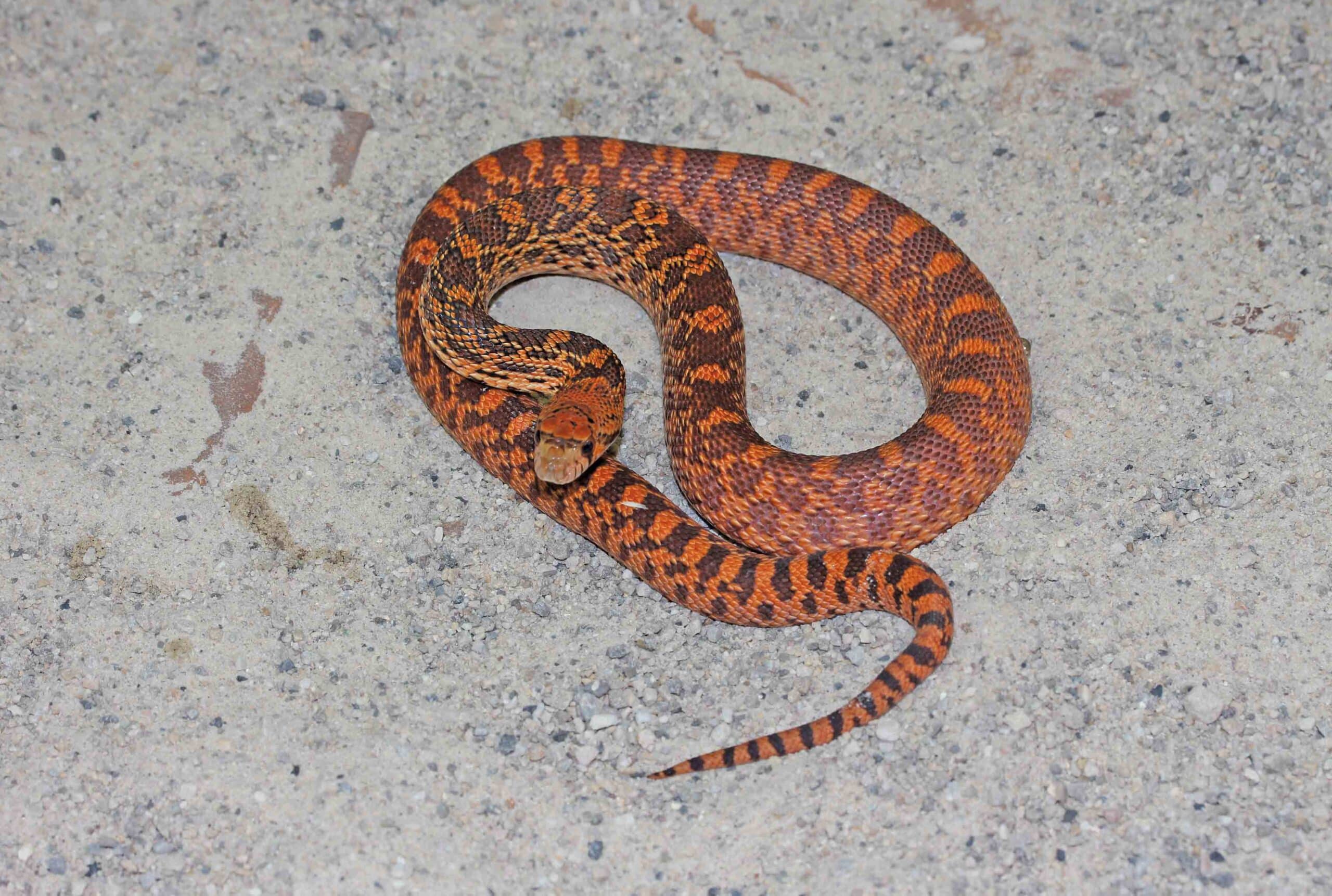
Hypomelanistic red bull snake
Once bulls are brought up out of brumation, feeding starts after two weeks, with the first meal being slightly smaller than average. Once feedings are on schedule, then male/female pairs are introduced together starting at week 4. I personally experience the breeding season lasting from four to six weeks, where I prefer to stick to timeframes versus shed cycles.
Three to four days after a meal to allow digestion, I put male/female pairs together for breeding. I allow them to be together up to three days a week, for a six week period or until I can tell the females are gravid.
Incubating the Eggs
Gestation of the eggs is about five to six weeks, with feeding females their regular-sized meals for the first two weeks, then feeding them smaller meals for the remaining gestation period due to the eggs being produced.
Shed cycles regarding egg-laying are then followed. Once they shed during the gestation period, the eggs are commonly laid around 10 days after, on average. In getting ready for the eggs, for my bigger cages, I put in cat litter boxes, with side holes for access and fill them with vermiculite with a 50-50 mixture of water/vermiculite with the perfect mix producing a damp ball in hand with no water coming out, and green/peat moss. I use the moss as it not only appears to calm the bulls, it provides additional security.
Size of clutches are variable, ranging anywhere from four eggs to upwards of 30 eggs, with 12 to 15 eggs for larger bulls being the average. Shoeboxes with the aforementioned vermiculite-water mix serve as incubation boxes, with temperatures ranging from 76 to 82 degrees Fahrenheit (24.4 to 27.8 degrees Celsius). I halfway bury the eggs in the vermiculite, as well. Incubation periods can vary from 8 to 11 weeks. Various methods of storing the eggs range from using controlled incubators to storing the eggs on shelves with room temperatures, which I prefer and have successfully done for many years.
Hatching Babies
Baby bullsnakes emerge from the eggs within one to two days of pipping, living off of their yolk for several weeks, resulting in not needing to be fed before the post-hatching shed. Hatchling size ranges from 15 to 20 inches, and housing hatchlings is similar to other colubrids. Shoeboxes with shredded aspen/paper towels, with a hidebox and water dish, are perfect, keeping them with the same temperatures, as previously mentioned.
Genetics, Morphs, etc.
Regarding morphs in bull snakes, there are several single-gene morphs, which are: Albino Hypomelanistic/Hypo: Trumbower and Stillwater strain. Axanthic: Ballam and Miami Co.
Other morphs include simple recessives such as white-sided and patternless, while line-red morphs such as yellow and red abound, as well.
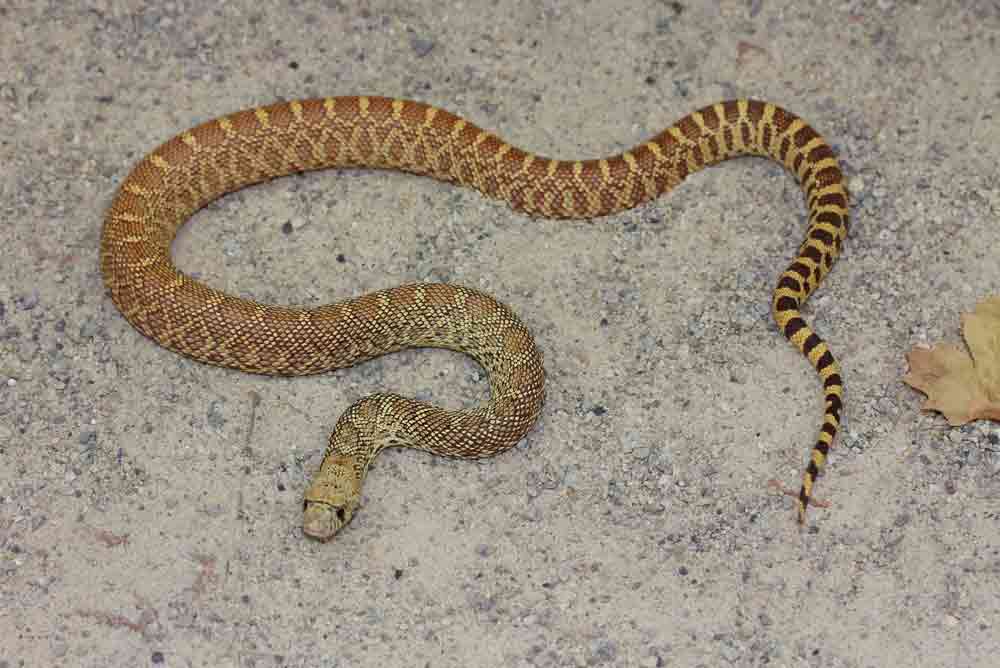
Trumbower morph.
Gene/Combo Morphs
Locality lines are special to me personally, and are kept for various reasons which include specific patterns and colors pertaining to that specific locality.
Some commonly-bred locality lines include Kingsville, TX red bulls, Kankakee/Indiana bulls, which are darker bulls, various Texas localities such as Highway 277, Canadian bulls, the rare Red Lodge, MT dwarf line, and others.
The possibilities for bull morphs are endless, and I feel we are only just getting started with seeing the results of genetic combinations producing jaw-dropping colors and visual presentations.
Field Herping/Travel
I have enjoyed field herping for bulls in various states such Colorado and Kansas. Prairielands, plains, and rich forests are where I have encountered many bulls. Finding them is always a pleasure, during road cruising or field herping, with their peak activity during the morning/early evening hours. The excitement of finding wild specimens is unlike anything else!
Overall Experience
My experience with working with bulls has been invaluable and such a treasure! The fun produced with breeding and hatching both locality and morph specimens, has been such a joy and a celebration of our amazing hobby, and the future, in so many ways, looks promising with these fine animals. These amazing snakes truly are exceptional, with so many qualities making them superior captives with not only visual appeal, but with their intelligence outlined in their behavior. Bull snakes truly are among the best pet snakes and I am ecstatic to share my experiences with anyone looking for truly unique animals to study, observe, breed, and to be a part of their lives.
Jason Nelson breeds bull snakes and other species. Reach him on Instagram at @envy_reptiles.

